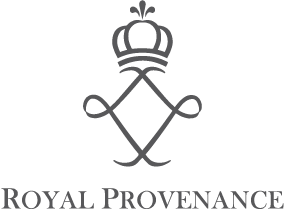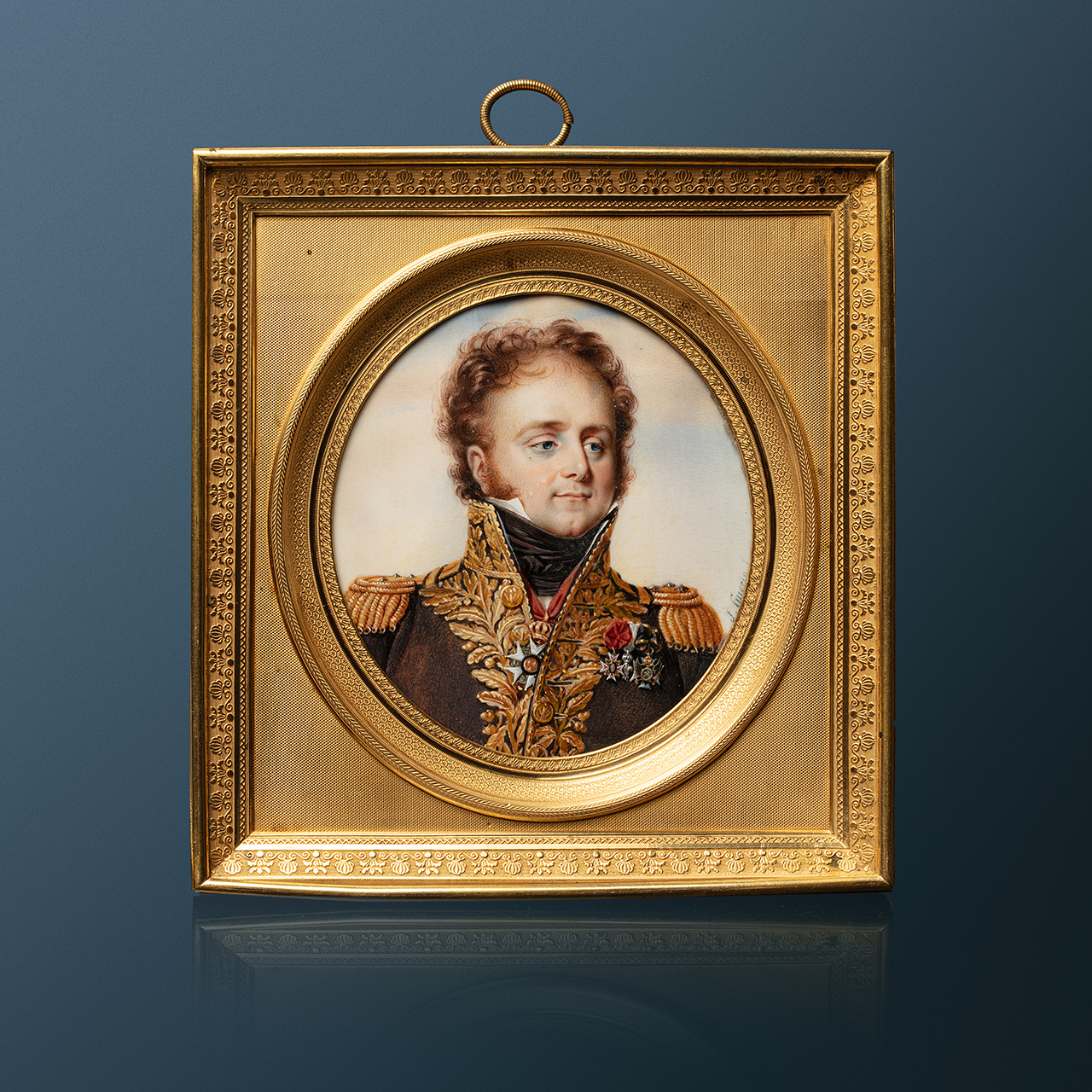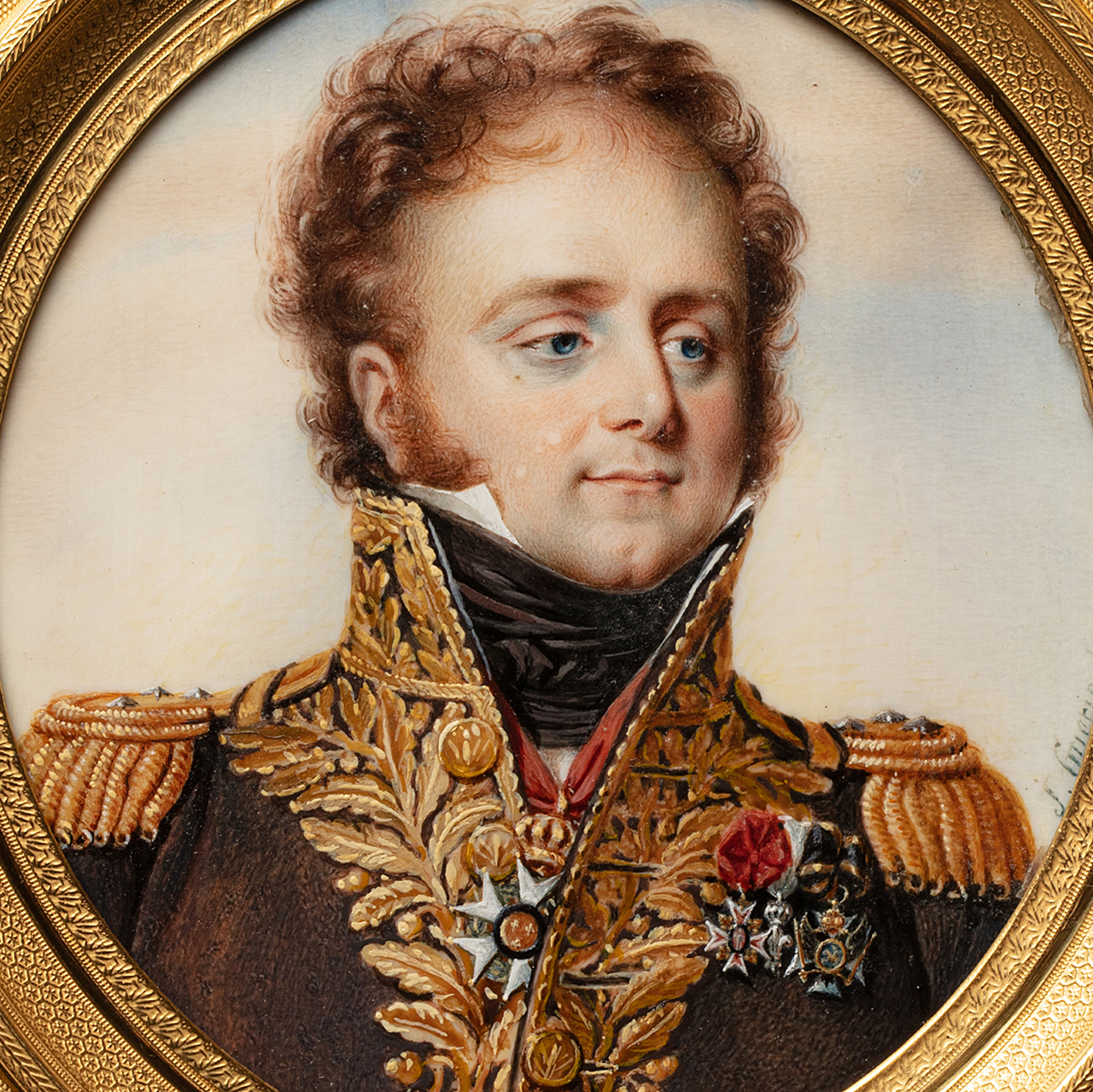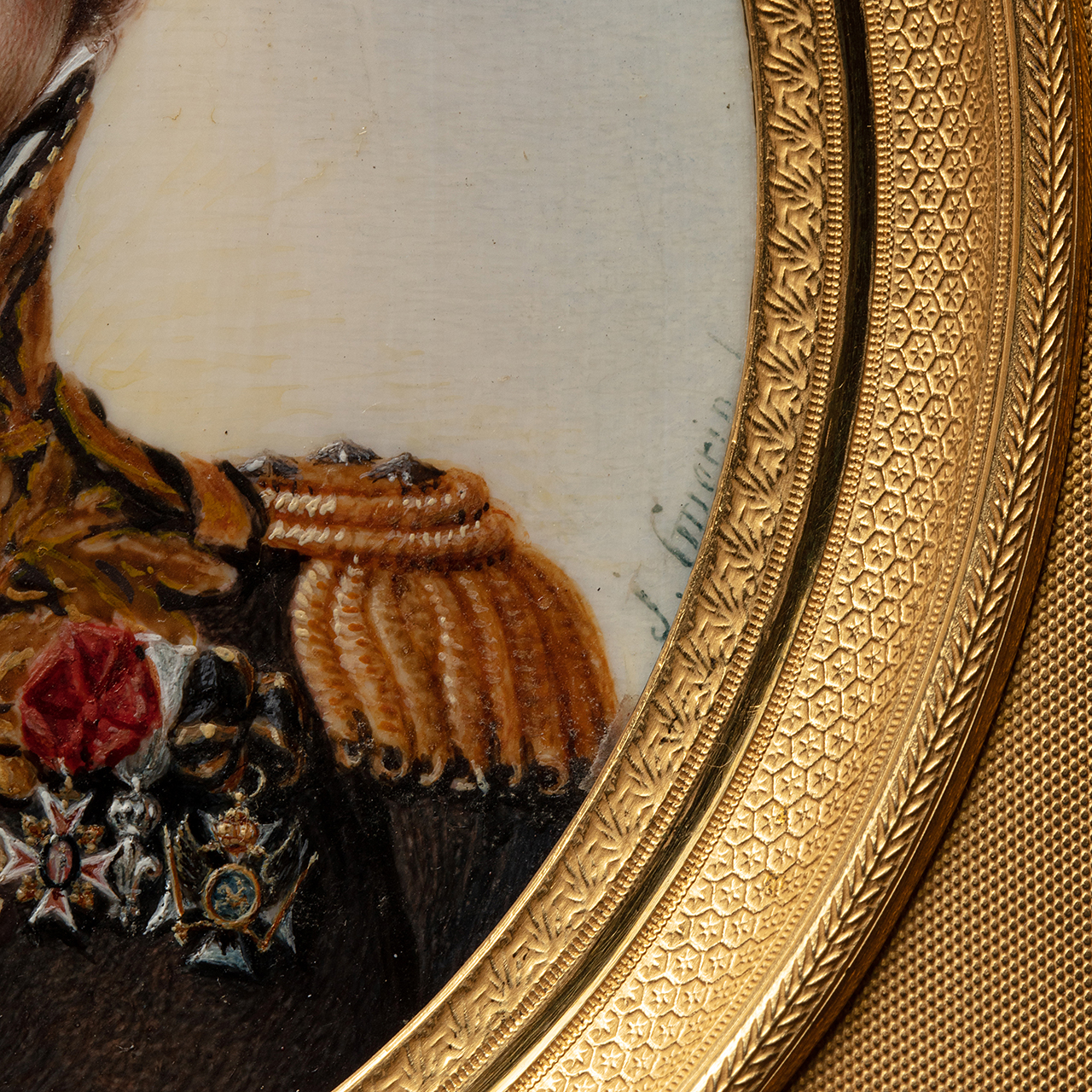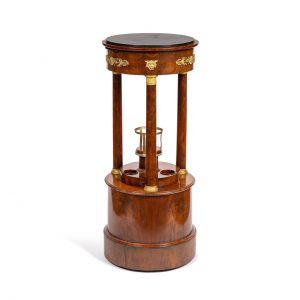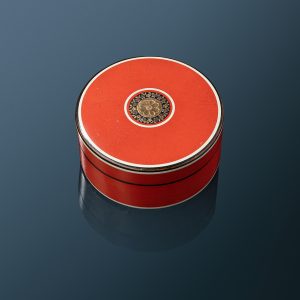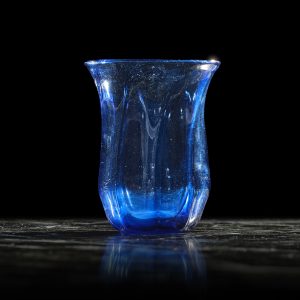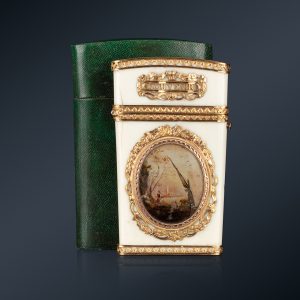Round miniature painted with gouache on ivory, signed lower right on the border "J. Guerin f(ecit).", depicting the general in bust, three-quarters to the right, against a cloudy sky, in uniform wearing at the neck his cross and ribbon of Commander of the Legion of Honor (received May 14, 1813), his cross of the Order of Saint-Louis, his decoration of the Lily and his cross of the Holy Empire.
Circa 1815.
Good condition, light restorations made by Mr. Bernd Pappe.
In an important rectangular gilt bronze frame chiseled with palms, round view, with easel foot on the back. It has on the back a handwritten label indicating: "General de Berckheim, brother of Henriette and Fanny".
D. 8 cm. Frame: H. 13.5 x L. 13 cm.
The Cabinet of Prints and Drawings of the Musée de Strasbourg keeps three lithographs and a photographic print after our miniature (inv. 77.2019.0.593, -594, -595 and CE5279), one of which was drawn by Singry.
Two of these lithographs have been published:
- Inv. 77.2019.0.594 in Gallerie von Bildnissen ausgezeichneter Elsaesser aus Aelterer und Neuerer Zeit, Strasbourg, Johann Heinrich Heitz, 1825.
- Inv. 77.2019.0.595 in Alsatian biographies with portraits in photography, Colmar, 1884-1890.
Son of the engraver Jean Guérin of Strasbourg, Jean-Urbain Guérin received his first training from his father, then from Charles-Alexis Huin. According to Prévost and d'Amat, Guérin would also have studied with Jean-Baptiste Regnault. He was sent to the capital with Jean-Baptiste Kléber, his childhood friend. There he frequented the Alsatians of Paris, in particular Jean-Baptiste Weyler, who advised him to make a career in the art of miniature painting. He continued his apprenticeship with David then worked with Jean-Baptiste Isabey, his younger son of 7, whom he met in David's studio.
Guérin himself mentions in his book of reason which he produced, in 1791, the portrait of Georgiana, Duchess of Devonshire, friend of Queen Marie-Antoinette. The latter, which he also portrays, will always protect the young artist. He still painted Louis XVI and drew the portrait of several deputies of the Third Estate (1785). These are engraved some time later by Franz Gabriel Fiesinger.
During his career, he painted the portraits of several generals of the Republic, including the one, copied many times, of Kléber, his childhood friend, and of Bonaparte. He will also leave a portrait of Mozart. Returned to France under the Consulate (1798), he entered the service of Joséphine de Beauharnais and exhibited at the Salon until 1827 (notably in 1814 and 1827 "a large miniature, portrait of a man" respectively under n ° 488 and 511 ).
Guérin remains, with Isabey and Augustin, one of the most famous miniaturists of his time. An anecdote gives an account of the esteem which the painter David had for him: “David professed a special esteem for this beautiful talent. On the verge of marrying one of his daughters, he wanted to owe Jean Guérin's portrait of the young bride with a brush. The latter, precisely proud of this choice, readily consented, but on condition that the painter of the Sabines would pose the model himself. We need not say that this work was one of the best of the skilful miniaturist. "
From an old noble family of Alsace, he entered at the age of 14 as a second lieutenant in the Regiment of La Marck, quickly moved through the lower ranks, and became, barely 30 years old, colonel of the 1st cuirassier regiment. .
He attended the battles of Heilsberg, Friedland, Eckmuhl, Essling, Wagram, Znaïm, received on the battlefield the ranks of brigadier general on July 12, 1809 and of division general on September 3, 1813, still distinguished himself in Polatsk, where it releases a large part of the artillery of the 2nd corps enveloped in an enemy cavalry charge, and at Borilow.
Squire of the Emperor Napoleon I, he received the command of the cavalry division formed of the four regiments of the guard of honor of the Imperial Guard, and he was created baron of the Empire on March 9, 1810. Major general on 3 September 1813, he rallied to the French Restoration in 1814 - which did not prevent him from returning to the Emperor during the Hundred Days - which conferred on him other titles: twice appointed by the departmental college of Haut -Rhin, on August 2, 1815 and October 4, 1816, he was appointed deputy, and became inspector-general of the cavalry, under the protection of the Duke of Angoulême. He votes in the Chamber of Deputies with the constitutional royalists, without ever going up to the rostrum.
He is one of 558 officers to have his name engraved under the triumphal arch of the Etoile in Paris.
